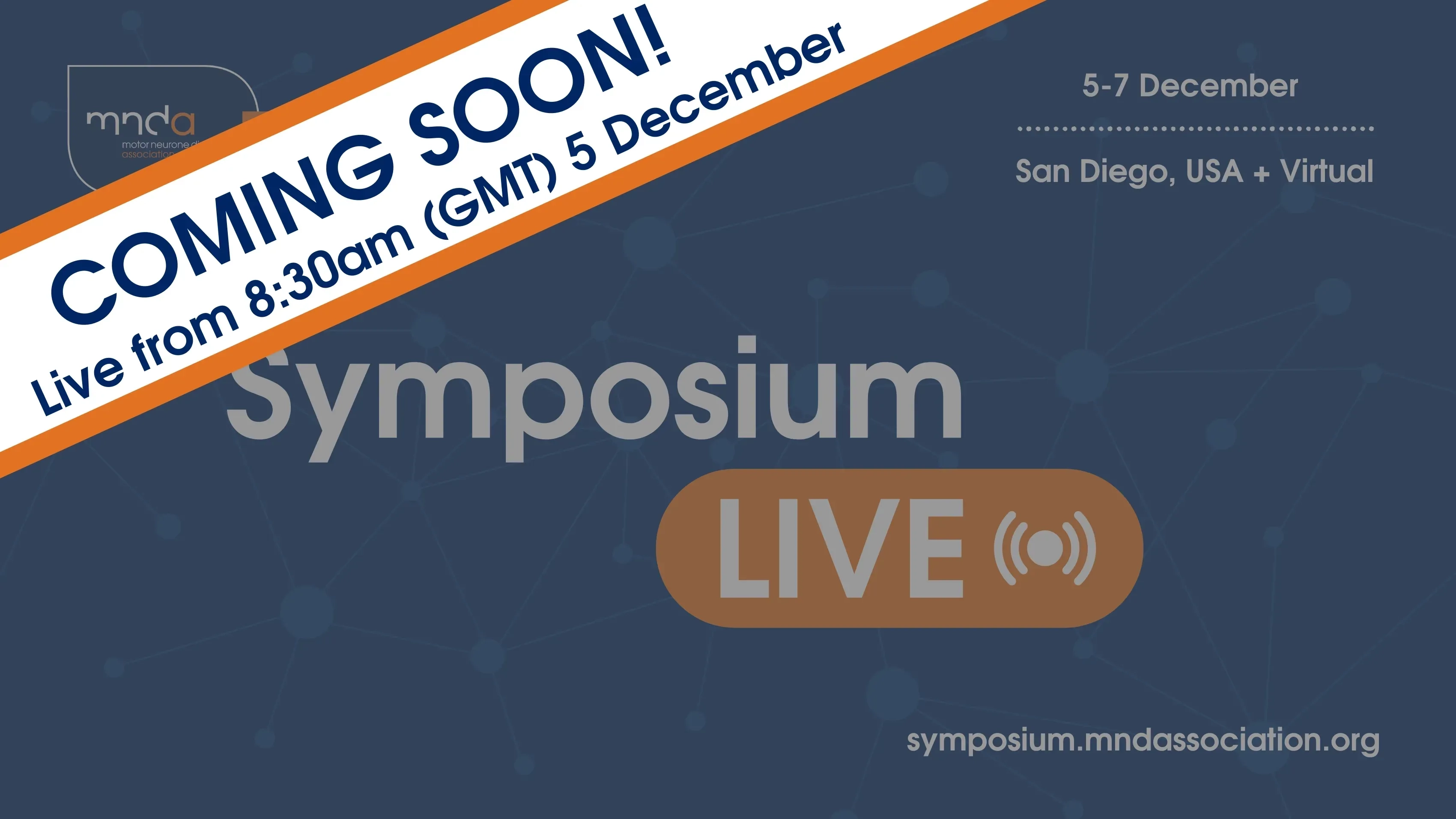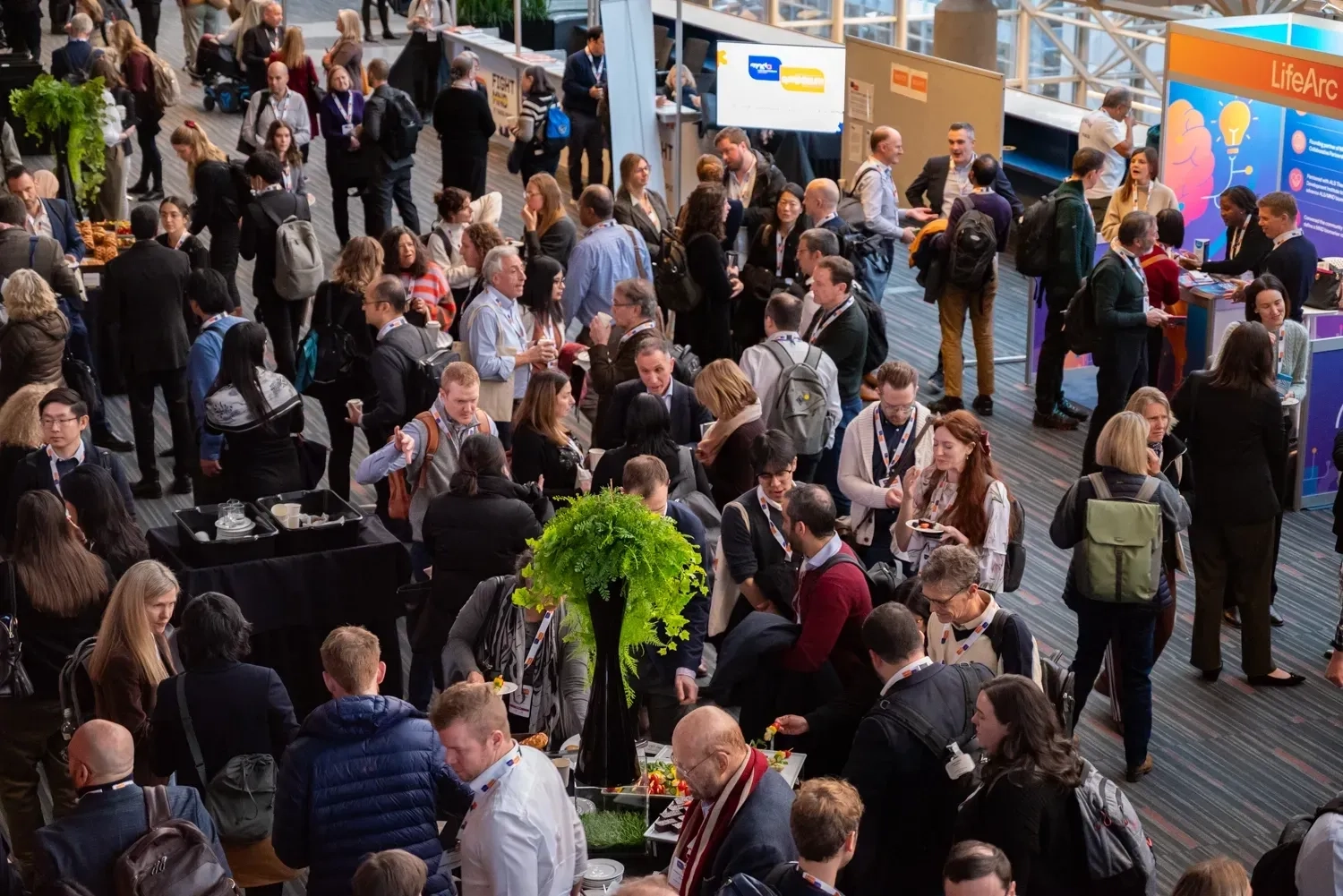28 November 2025 Blog
By Dr Brian Dickie, the MND Association's Chief Scientist
In a matter of days, the world’s largest research meeting dedicated to motor neurone disease (MND) begins. From 5-7 December, we’ll gather in San Diego, USA, for the MND Association’s 36th International Symposium on ALS/MND. ALS - amyotrophic lateral sclerosis - is the most common form of MND and as such, many countries use the term ALS rather than MND.
In collaboration with our hosts, the ALS Association, we’ll be welcoming delegates from across the globe to this landmark event. It’s an essential forum for creating and strengthening global collaborations – collaborations that are key to finding effective treatments and, ultimately, a cure for this devastating disease.
The event has come a long way since its ‘small beginnings’ in 1982. Around 40 delegates met in Solihull, England to share new developments and deepen their understanding of MND. They’d grab lunch across the road at the local newsagents every day. In contrast, last year our hybrid event in Montreal, Canada, welcomed 1500 onsite and online delegates from over 50 countries. That international reach continues this year, with representation from every corner of the world.
This year’s event
The scale and scope of this year’s programme reflect the exciting scientific progress being made. The sessions will cover everything from cutting-edge genetics and stem cell research to advances in clinical care and assistive technology. Poster sessions remain a highlight, sparking lively, in-depth discussions and catalysing new collaborations.
Behind the scenes, the Programme Committee has worked tirelessly to craft a diverse and engaging agenda that reflects the breadth and depth of global research – from pioneering science to best practices in care.
For me, one of the presentations I’m most looking forward to is Advances in SMA treatment: Lessons for ALS presented by Professor Charlotte Sumner, who is based at Johns Hopkins University in Baltimore. Prof Sumner works on a motor neurone degenerative condition called spinal muscular atrophy (SMA). The disease can happen in adults but usually occurs in babies and infants. We've seen extraordinary advances in SMA treatment in recent years, providing ‘proof of principle’ that we can keep sick motor neurones alive. In line with the thinking that earlier treatment of disease will be most effective, I'm looking forward to hearing about Prof Sumner’s proposition to look to treat SMA before birth, starting therapy whilst the embryo is growing in the womb. It’s fascinating research, with important implications for emerging treatments for adult onset MND.
We’re also proud to hold our first session dedicated to Primary Lateral Sclerosis (PLS). PLS only accounts for about 1-2% of all newly diagnosed MND cases and, with it being less common, there has been limited research and no trials to take part in so many people with PLS feel quite disadvantaged. We’re aiming to use this opportunity to engage with the PLS research community and hopefully make PLS a regular session at the Symposium for experts to share the latest on diagnosis, biomarkers, and potential genetic links, opening new avenues for research and paving the way for clinical trials in the future.
Bringing the Symposium to you
Not everyone can be in San Diego but there’s still time to join the action from the comfort of your home. Online registration for the Symposium is still open, which gives you access to live-stream presentations as they happen, the virtual poster hall and content on-demand after the event. You can find out more and register on our Symposium website.
And for everyone looking for Symposium updates in bite-sized chunks, for the first time this year we’re introducing Symposium LIVE - new live feed bringing real-time updates, highlights and insights from the Symposium directly to you. Whether you’re a researcher, healthcare professional or affected by MND – you can see updates from the Symposium as it unfolds.
Why it matters
Every year, the Symposium reminds me why we do this work. It’s not just about data or presentations – it’s about hope.
From identifying new therapeutic targets, to promising clinical trials, to emerging technologies like brain-computer interfaces that restore improve quality of life, the pace of innovation is accelerating. And while challenges remain, the determination of this community is unwavering.
What I find is that the best science isn't necessarily discussed in the lecture hall. It's discussed in the bits in between, and the coffee breaks, lunches and the poster sessions. One of the questions we always ask delegates in the evaluation after the meeting is ‘have you made any new contacts or new collaborations that you're going to move forward with?’. Last year, over 90% of the delegates said they had! The connections made, the collaborations sparked and the knowledge shared all move us closer to our common goal: a world free from MND.
So, as we count down to 5 December, I invite you to join us – in person, online, or through our live feed. Together, we are pushing boundaries, inspiring progress and shaping a future where MND is no longer a life-limiting diagnosis.
Dr Brian Dickie, Chief Scientist



